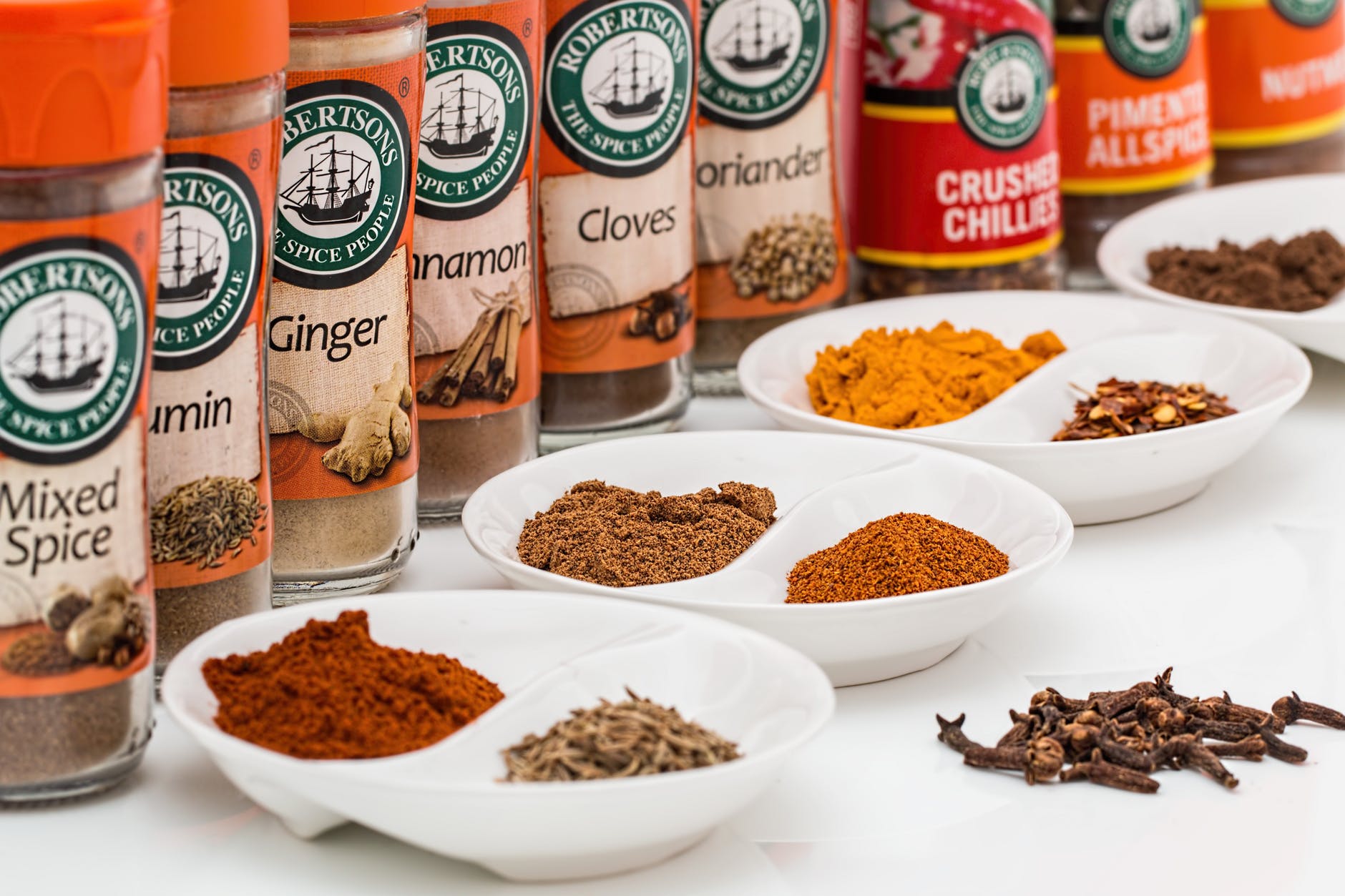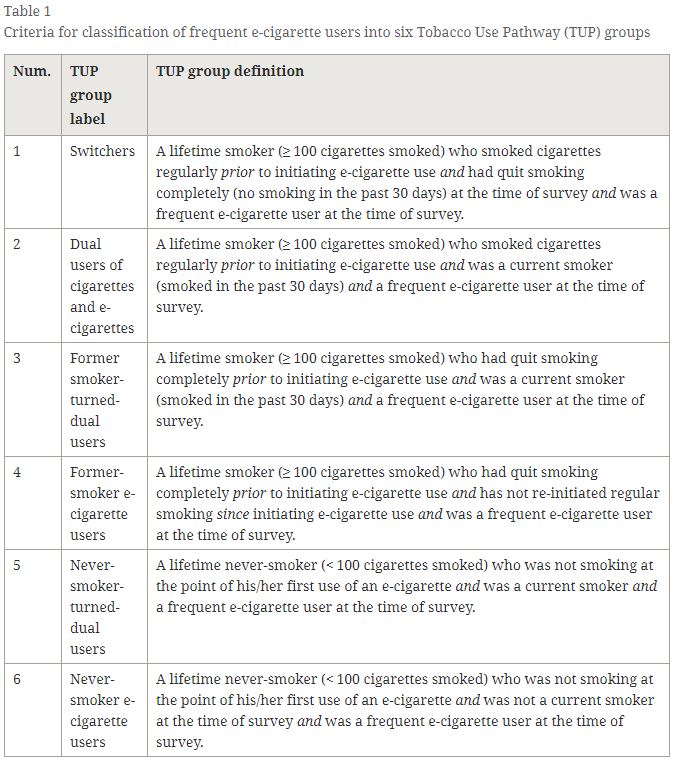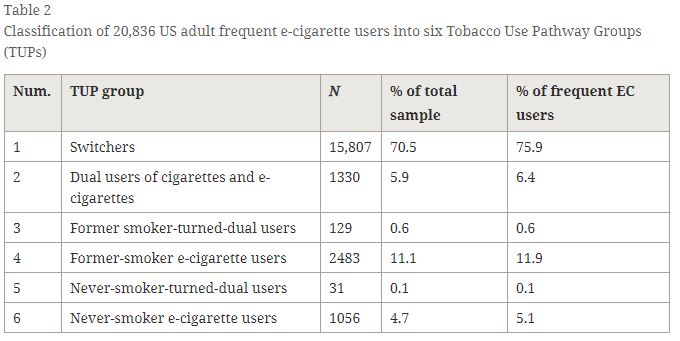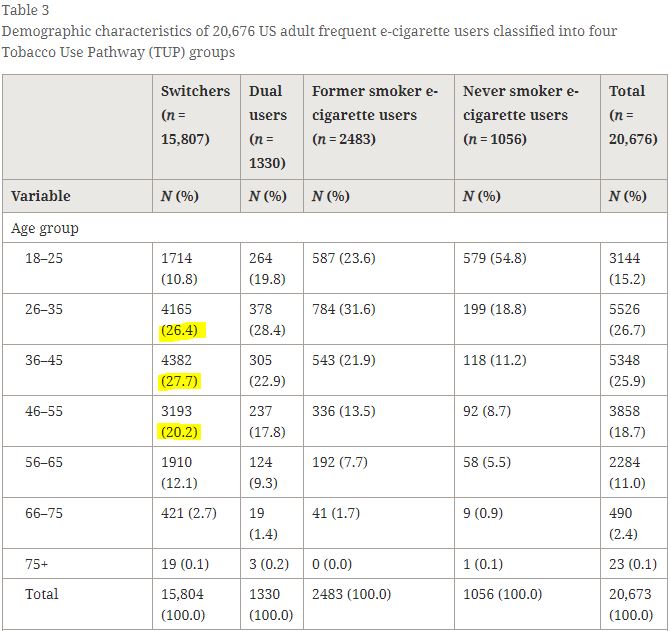Studying Flavours

With the recent announcement from FDA Commissioner Scott Gottlieb talking about the possibility of curtailing the marketing and selling of flavoured vapour products, it is timely that the Centre for Substance Use Research should have recently published a paper on the topic.
The CSUR came under fire when it published the Pleasure of Smoking report because, among other things, CSUR receives some funding from (you guessed it) the tobacco industry. Notably British American Tobacco and PMI. The same PMI that has kickstarted the Foundation for a Smoke-Free World. So naturally, you can assume that the usual suspects will view this paper with the same disdain.
As the paper is (currently) open access, I had a look. Well, it’d be rude not to.
Background
Understanding the role that flavors play in the population’s use of e-cigarettes and the impact that flavored e-cigarette products have on the population’s use of more harmful tobacco products, like conventional cigarettes, has been identified by the US Food and Drug Administration (FDA) as a public health research priority. The purpose of the study was to assess the first e-cigarette flavor and current e-cigarette flavors used by a large non-probabilistic sample of adult frequent users of e-cigarettes in the USA and assess how flavor preferences vary by cigarette smoking status and time since first e-cigarette purchase.
Well, for many vapers, flavours are among the foremost reasons for a) switching in the first place and, b) not relapsing. As I discussed with many other vapers here. This is something we, as the consumer, knew a long time ago. It’s good that science has finally begun to catch up.
Methods
An online survey assessed the first e-cigarette flavor and current e-cigarette flavors used by a non-probabilistic sample of 20,836 adult frequent e-cigarette users in the USA. Differences in e-cigarette flavor preferences between current smokers, former smokers, and never-smokers and trends in the first flavor used across time of e-cigarette use initiation were assessed.
A nice, large sample size. This is a good indicator of good, solid, well-done science. Doesn’t necessarily mean it is good science mind (as we’ve seen with the bilge recently produced by the likes of Barrington-Trimis). But I’ve had a scan through the methodology and analysis and to my rather untrained eye, it looks good.
Results
The majority (n = 15,807; 76.4%) of sampled frequent e-cigarette users had completely substituted e-cigarettes for conventional cigarettes—“switchers”—and were currently using rechargeable, refillable vaping devices. Among them, the proportion of first e-cigarette purchases that were fruit-flavored increased from 17.8% of first purchases made before 2011 to 33.5% of first purchases made between June 2015 and June 2016. Tobacco-flavored first purchases almost halved during this time (46.0% pre-2011 to 24.0% between 2015 and 2016). Fruit/fruit beverage (73.9 to 82.9% of sampled users), dessert/pastry (63.5 to 68.5% of sampled users), and candy, chocolate, or sweets (48.7 to 53.4% of sampled users) were the most popular currently used e-cigarette flavors. Tobacco and menthol flavors, the two most popular flavors for initiating e-cigarette use prior to 2013, now rank as the 5th and 6th most popular currently used e-cigarette flavors, respectively.
This just highlights what I, and pretty much any vaper, know. Flavours are one of, if not, the key to successfully switching to vaping. The fact that this study was limited to US vapers responses should have the likes of Gottlieb having a moment of pause. But naturally, it won’t.

Harm Reduction Journal 2018 15:33
Unlike our US brethren, the lads (and lasses) at CSUR actually understand what it is that makes a vaper, well, a vaper. None of this “past 30-day use = current user” bollocks.

Harm Reduction Journal 2018 15:33
Here’s where it gets interesting. As per table 1 (previous graphic), the “never smoker e-cigarette users” is only 4.7% of the total sample - 20,836 respondents. This does two things:
- Throws a spanner in the “epidemic” commentary
- Tells the “gateway theory” to go do one
As for the commentary that we’ve heard over the years that “flavours are there to mask the burnt tobacco” (rolls eyes), and the ever-present “flavours attract kids”, the biggest age demographic in this particular survey was:

Harm Reduction Journal 2018 15:33
Not the youth group but us young adult through to middle-age. Stick that in your pipe and smoke it.
If it wasn’t for the fact that the FDA is led by a reactionary and seemingly gullible individual, both past and present, this kind of knowledge would have already been known.
The positive association observed between the use of fruit flavor and time of first e-cigarette purchase suggests it is likely that future frequent e-cigarette use will be increasingly initiated with the use of non-tobacco flavors, regardless of the individual’s smoking history. Judgements on whether authorizing marketing of flavored e-cigarettes would be appropriate for the benefit and protection of the public health should account for the possibility that adults who have switched completely from smoking cigarettes to using e-cigarettes in non-tobacco flavors may not have attempted to switch to e-cigarettes, or perceived themselves as able to switch, had e-cigarettes only been available in the flavors that are available through conventional cigarettes.
There’s a couple of important points (emphasis mine) in the above paragraph I thought it worth drawing attention to.
- it is likely that future frequent e-cigarette use will be increasingly initiated with the use of non-tobacco flavours
Well if that is a statement for a “no shit Sherlock” I don’t know what is. Look, as I discussed in other posts, flavours are incredibly important. As is the ritualistic hand-to-mouth motion, but the key with flavours is quite simple - disassociation. For those smokers that no longer enjoy the taste of smoking, but still enjoy the ritualistic side, flavours are key. True, tobacco flavours are available but, as this paper shows, the initial take-up of vaping using tobacco flavours is becoming less prevalent.
- account for the possibility that adults who have switched completely [from smoking cigarettes] to using e-cigarettes in non-tobacco flavours may not have attempted to switch
I’m not going to speak for every vaper out there as I know a number of them started, and still use tobacco flavours, but many vapers switched because of the variety of flavours available to them. Among many other aspects of course. If flavours were taken away, or heavily limited to tobacco/menthol/some fruit like apple/strawberry/mango, then the success rate or switch rate would suffer. Louise Ross has commented on many occasions that the availability of flavours for smokers that attended her stop smoking service was one reason why vaping worked for those individuals. I can only imagine how low the success rate would be if the range of flavours were significantly diminished. Probably stuck in the single digit % point.
A tobacco regulatory policy that maintains adult smokers’ access to the existing market of non-tobacco flavors, and enables manufacturers to innovate existing flavors, could increase the popularity and effectiveness of e-cigarettes as a substitute for cigarette smoking.
This is the comment that should give the FDA pause for thought (though it won’t) because the FDA is currently evaluating whether or not to restrict flavours which would not only cause the vaping uptake to stall, and most likely rapidly decline (I mean, who wants dull, boring tobacco and menthol flavours as the only options?) in all age groups - most notably the group the FDA feel most “at risk” - the youngsters. But it would also significantly impact all age groups. Some, such as myself, would probably just go on making our own and give the FDA the big mid-digit.
But for those that either can’t, or won’t make their own? Well, the FDA is telling you that you’re fucked.